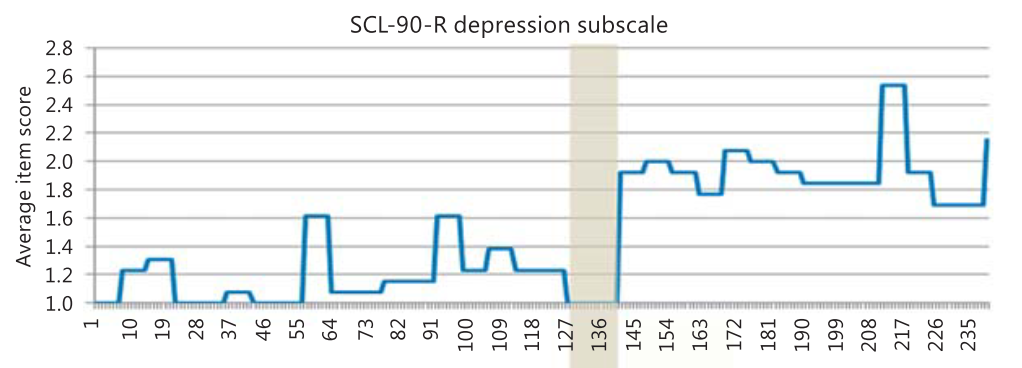A new paper entitled “Data from ‘Critical Slowing Down as a Personalized Early Warning Signal for Depression’” was published by Jolanda Kossakowski and colleagues yesterday.
The paper was published in the new Journal of Open Psychology Data that you may want to keep an eye on. They publish datasets, which incentivizes sharing of data because you can get cited for it. #openscience
The paper encompasses a dataset and a detailed description thereof. The data were used in a prior paper by Marieke Wichers and colleagues, who identified that the dynamic network of one remitted depression person showed signs of critical slowing down before he transitioned from a healthy to a depressed state. The authors argue that this could be an early warning signal which may enable us to predict such phase transitions in the future.
So how do the data look like? It is a n=1 case-study time-series dataset with 50 variables and 1478 timepoints assessed over 239 consecutive days. Many items were collected 10 times per days, others daily (sleep quality and mood) or weekly (depression checklist). Here a visualization of the data (AD = antidepressant) from Wichers et al. 2016.:

The reuse potential of this dataset is considerable. Not only does it exceed any other studies I am aware of in terms of measurement points, but it also features a critical transition where the patient relapses into depression. As Kossakowski and colleagues state: In general, the data “are suitable for various time-series analyses and studies in complex dynamical systems […].” Specifically, the data can be used for three main purposes. “First, the data are extremely suitable for researchers to validate new methods for predicting the onset of a critical transition. Second, there have been recent developments into estimating time-varying networks. This data can be used as an empirical example to show how time-varying networks can be estimated and how the network develops over time. Lastly, since items were measured at different time scales, this dataset can aid research that aims to combine (time-series) data from different time scales.”
Abstract
We present a dataset of a single (N = 1) participant diagnosed with major depressive disorder, who completed 1478 measurements over the course of 239 consecutive days in 2012 and 2013. The experiment included a double-blind phase in which the dosage of anti-depressant medication was gradually reduced. The entire study looked at momentary affective states in daily life before, during, and after the double-blind phase. The items, which were asked ten times a day, cover topics like mood, physical condition and social contacts. Also, depressive symptoms were measured on a weekly basis using the Symptom Checklist Revised (SCL-90-R). The data are suitable for various time-series analyses and studies in complex dynamical systems.
Kossakowski, J.J. et al., (2017). Data from ‘Critical Slowing Down as a Personalized Early Warning Signal for Depression’. Journal of Open Psychology Data. 5(1). DOI: http://doi.org/10.5334/jopd.29

Pingback: A summary of my academic year 2017 – Eiko Fried